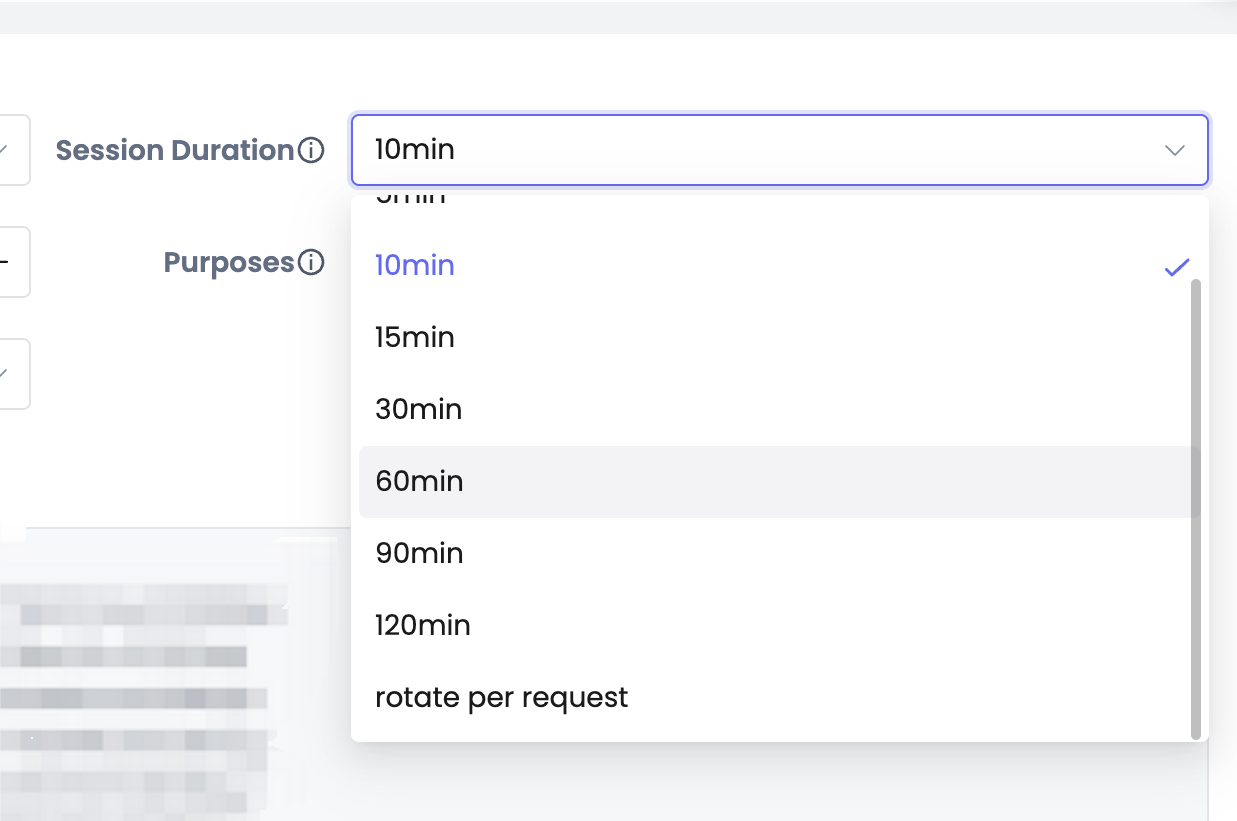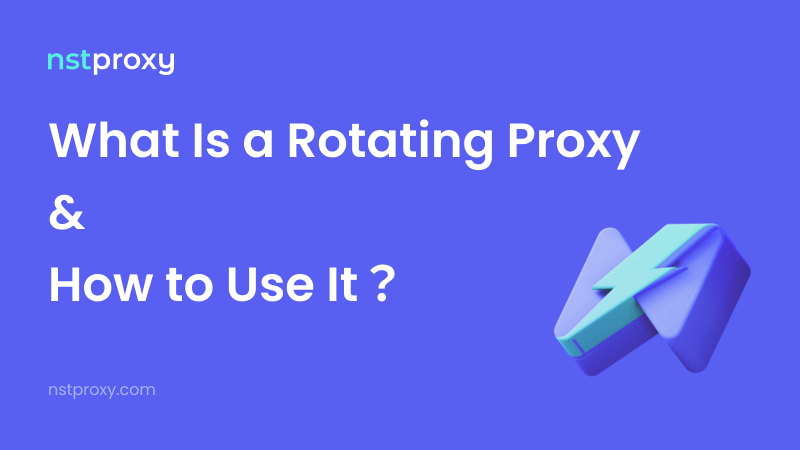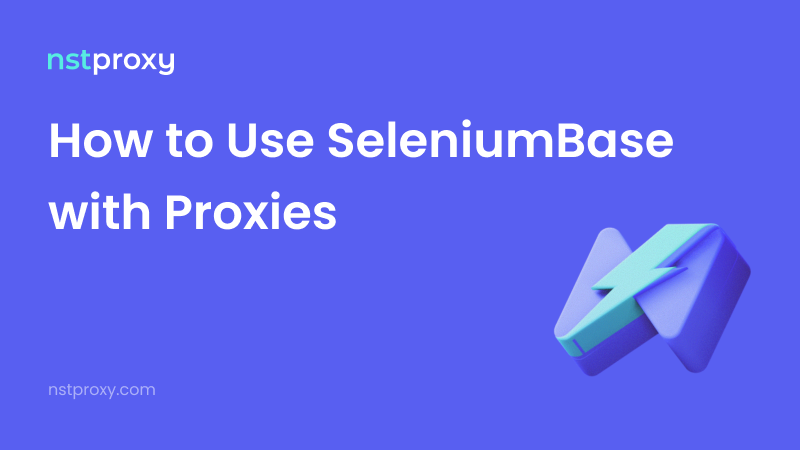A Rotating Proxy dynamically assigns a fresh IP address from a proxy pool for each request or session.
Unlike a static proxy that maintains the same IP, a rotating proxy switches addresses constantly, making your traffic appear as if it’s coming from different users or locations.
This significantly reduces the risk of being detected or blocked during:
- Web scraping
- SEO monitoring
- E-commerce tracking
- Web3 tasks
- Automation at scale
Why Use a Rotating Proxy with Nstproxy?
- Bypass IP blocks and captchas – Frequent IP changes help avoid anti-bot triggers.
- Enhanced anonymity & geo-diversity – Appear as multiple users across different regions.
- Higher success rates – Requests are evenly distributed, avoiding detectable patterns.
Nstproxy’s Proxy Rotation Setup: Quick & Easy
-
Sign up and log in to your [Nstproxy Proxy Dashboard]
-
Create a proxy channel – choose between residential, IPv6, or datacenter proxies with rotation modes.
-
Grab the endpoint (proxy URL) and use it in your scraping or automation scripts.
🔄 Rotation options:
- Set your proxy rotation time — from 1 minute to 120 minutes.
- Or rotate to a new IP for each request automatically.
check on [Nstproxy Proxy Dashboard]

Rotating vs. Static Proxies: What’s the Difference?
| Feature | Rotating Proxies | Static (Sticky) Proxies |
|---|---|---|
| IP Rotation | Per request or timed interval | Fixed IP |
| Block/CAPTCHA Risk | Low | Higher risk |
| Session Continuity | May switch IPs frequently | Maintains same IP |
| Best Use Cases | Large-scale scraping, SEO, bots | Account management, testing |
Best Practices for Proxy Rotation with Nstproxy
-
✅ Use random rotation to distribute requests and avoid rate limits.
-
✅ Monitor performance and switch away from failing IPs.
-
✅ Balance rotation frequency:
- Too fast → may break sessions.
- Too slow → higher risk of detection.
-
✅ Use sticky sessions for login or checkout flows.
Getting Started – Example in Python & Curl
🔁 Rotation time: 10 minutes
Python (Requests)
import requests
username = 'YourChannelID-residential-country_ANY-r_10m-s_CpCPl8BxIW'
password = 'YourPassword'
host = 'gate.nstproxy.io'
port = '24125'
proxy = f'http://{username}:{password}@{host}:{port}'
proxy_dict = {
"http": proxy,
"https": proxy
}
response = requests.get("https://api.ipapi.is/", proxies=proxy_dict)
print(response.text)cURL
curl --proxy gate.nstproxy.io:24125 \
--proxy-user YourChannelID-residential-country_ANY-r_10m-s_CpCPl8BxIW:YourPassword \
https://api.ipapi.is/👉 Your Nstproxy endpoint handles rotation automatically — no manual logic needed.
Why Nstproxy Stands Out for Rotating Proxies
- 🌐 110M+ residential IPs across 195+ countries (IPv4 & IPv6 supported).
- 🛡️ Anti-ban design – Reduce captchas and IP blocks.
- 🔄 Flexible rotation options – random sessions as needed.
- 👨💻 Developer-friendly – API integration, dashboard control, and trial availability.
Final Thoughts
Proxy rotation is essential for modern scraping and automation.
With Nstproxy’s robust rotating residential proxies, flexible IP rotation, and high anti-ban success rate, you can automate large-scale requests safely and efficiently.
🚀 Ready to rotate smarter?
Sign up and explore your [Nstproxy dashboard] today to unlock the full power of rotating proxies.


